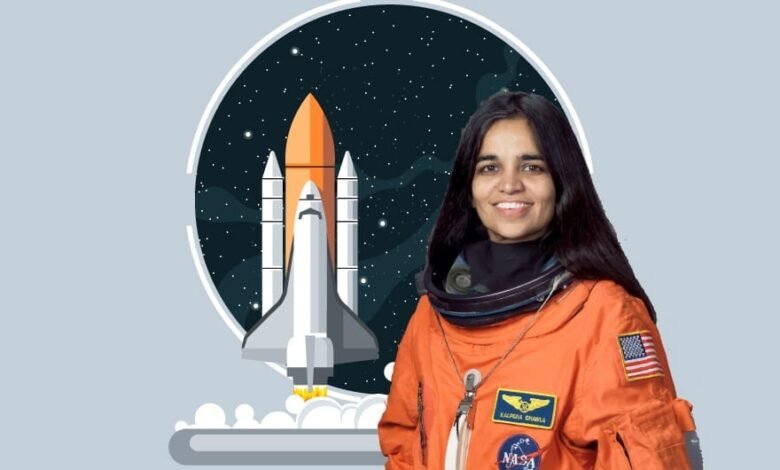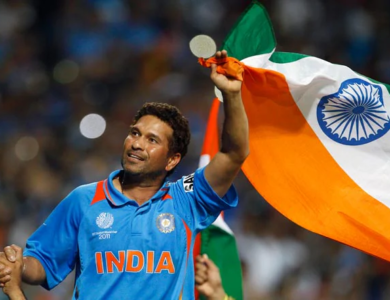Kalpana Chawla: A Trailblazing Astronaut’s Journey
Touching the Stars: The Inspiring Odyssey of Kalpana Chawla

Kalpana Chawla
Kalpana Chawla was a pioneering Indian-American astronaut and aerospace engineer who achieved several milestones during her career. Born on March 17, 1962, Chawla made history by becoming the first woman of Indian origin to venture into space. In 1997, she served as a mission specialist and primary robotic arm operator on the Space Shuttle Columbia, marking her first flight into space.
Chawla’s second and final flight was on board the Space Shuttle Columbia, which had the registration plate number 1. Tragically, the spacecraft disintegrated during its re-entry into the Earth’s atmosphere on February 1, 2003, leading to the loss of all seven crew members, including Chawla. Despite the devastating accident, Chawla’s legacy continues to inspire many. She was posthumously awarded the Congressional Space Medal of Honor, and numerous streets, universities, and institutions have been named in her honor. Chawla’s remarkable achievements and contributions to the field of space exploration will always be remembered and celebrated.
Early Life and Education of kalpana Chawla:
Kalpana Chawla’s early life and education played a crucial role in shaping her into the accomplished astronaut she would become. Here is an overview of her early life and educational journey:
- Birth and Family: Kalpana Chawla was born on March 17, 1962, in Karnal, a small town in the state of Haryana, India. She grew up in a loving and supportive family. Her parents, Banarasi Lal Chawla and Sanjyoti Chawla, encouraged her from a young age to pursue her dreams and aspirations.
- Interest in Aviation: Even as a child, Kalpana Chawla displayed a keen interest in aviation and the skies. She often watched planes fly overhead in Karnal and expressed her desire to “fly like a bird” to her father. This early fascination with flight planted the seeds of her future aspirations in the field of aerospace.
- Education in India: Chawla’s educational journey began in India. She completed her early schooling in Karnal. After completing her school education, she went on to pursue a bachelor’s degree in aeronautical engineering. She attended Punjab Engineering College in Chandigarh, India, where she took the first steps toward realizing her dream of working in the field of aerospace.
- Journey to the United States: To further her education and career in aerospace, Kalpana Chawla decided to move to the United States. Her pursuit of higher education and her dream of becoming an astronaut motivated her to leave her homeland and seek opportunities in the U.S.
- Master’s Degree in Aerospace Engineering: In the United States, Chawla attended the University of Texas at Arlington, where she earned a master’s degree in aerospace engineering. This educational milestone marked her entry into the world of aerospace engineering, providing her with the knowledge and skills necessary to excel in her chosen field.
- Ph.D. in Aerospace Engineering: Chawla’s ambition did not stop with a master’s degree. She continued her educational journey by pursuing a Ph.D. in aerospace engineering. She earned her doctorate from the University of Colorado in 1988. Her research for her Ph.D. focused on computational fluid dynamics, a field critical to understanding how fluids behave in various conditions, which had significant applications in aerospace engineering.
Career of Kalpana Chawla:
Kalpana Chawla’s career was marked by her remarkable journey from aeronautical engineering in India to becoming an astronaut at NASA. Here is an overview of her career, highlighting her significant achievements and missions:
- Early Career at NASA Ames Research Center: After completing her Ph.D. in aerospace engineering, Kalpana Chawla began her professional career by joining the NASA Ames Research Center in California in 1988. In her role as an engineer, she worked on various projects related to aerodynamics, which was essential for aircraft and spacecraft design.
- Becoming an Astronaut: Kalpana Chawla’s career took a significant turn when she was selected as an astronaut candidate by NASA in 1994. Her selection was a testament to her exceptional skills, dedication, and the importance of diversity in space exploration. She joined NASA’s astronaut corps and began rigorous training to prepare for her future missions.
- First Space Mission – STS-87: Chawla’s dream of space travel became a reality in 1997 when she flew into space for the first time. She served as a mission specialist and the primary robotic arm operator on the Space Shuttle Columbia’s STS-87 mission. The mission’s objectives included conducting various experiments in microgravity and deploying the Spartan satellite. Chawla’s performance in space was characterized by her precision and professionalism.
- Second Space Mission – STS-107: Kalpana Chawla’s second journey into space took place on STS-107, which launched on January 16, 2003. This mission was particularly significant as it was dedicated to scientific research and experimentation in a wide range of disciplines, including astronomy, physics, and biology. During the mission, the crew conducted more than 80 experiments.
The Columbia Disaster: Tragically, the STS-107 mission would end in disaster. On February 1, 2003, the Space Shuttle Columbia disintegrated upon re-entry into Earth’s atmosphere. The entire crew, including Kalpana Chawla, was lost in the tragedy. The disaster was a somber reminder of the inherent risks and challenges of space exploration.
Legacy and Inspiration: Despite the tragic end to her second space mission, Kalpana Chawla’s career and legacy continue to inspire individuals worldwide. Her journey from a small town in India to the vast expanse of space serves as a powerful reminder of the limitless possibilities that determination and passion can unlock. Chawla’s dedication and achievements have left an indelible mark on the fields of aerospace and space exploration.
In her memory, scholarships, awards, and institutions have been established to encourage young women to pursue STEM (Science, Technology, Engineering, and Mathematics) fields. Her legacy lives on as a source of inspiration and hope for those who dare to dream and reach for the stars.
Kalpana Chawla’s career, though tragically cut short, exemplifies the pursuit of knowledge, the courage to break barriers, and the determination to explore the unknown. Her memory continues to shine brightly in the night sky, just like the stars she longed to touch.
Honours and Recognition:
Kalpana Chawla received several honors and recognition during her career and posthumously, acknowledging her significant contributions to aerospace engineering and space exploration. Here are some of the notable honors and recognitions she received:
- NASA Space Flight Medals (1997 and 2003): Kalpana Chawla was awarded NASA Space Flight Medals for her participation in both her space missions. The first was for her role on the STS-87 mission in 1997, and the second was posthumously for her contribution to the STS-107 mission in 2003.
- Congressional Space Medal of Honor (2004): After the Columbia disaster, Chawla was posthumously awarded the Congressional Space Medal of Honor, one of the highest awards given by the U.S. Congress to astronauts.
- NASA Distinguished Service Medal (2004): In recognition of her outstanding service and dedication to space exploration, Kalpana Chawla was posthumously awarded the NASA Distinguished Service Medal, the highest honor bestowed by NASA.
- The Kalpana Chawla Memorial Scholarship: In her memory, various scholarships and awards were established to encourage young women and individuals pursuing careers in science, technology, engineering, and mathematics (STEM) fields. These scholarships are a tribute to her pioneering spirit.
- Minor Planet 51826 Kalpanachawla: In recognition of her achievements, a minor planet discovered in 1997 was named 51826 Kalpanachawla in her honor. This celestial body orbits the Sun and serves as a permanent tribute to her legacy.
- The Kalpana Chawla Award: The government of Haryana, India, introduced the Kalpana Chawla Award to recognize and honor women who have made significant contributions to the fields of science and technology.
- Public Memorials: Various public memorials and exhibitions have been established to honor Kalpana Chawla’s life and contributions. These include plaques, statues, and educational institutions named in her honor.
- Kalpana Chawla Center for Space and Nano Sciences: The Kalpana Chawla Center for Space and Nano Sciences was established at the Indian Institute of Technology (IIT) in Kanpur, India, to promote research and innovation in space and nanotechnology.
Married Life of Kalpana Chawla:
Kalpana Chawla was married to Jean-Pierre Harrison, a flying enthusiast and aerospace engineer. Here are some details about her married life:
- Marriage: Kalpana Chawla and Jean-Pierre Harrison got married in 1983. Their marriage reflected a shared passion for aviation and aerospace. Their common interests and ambitions created a strong bond between them.
- Shared Love for Flying: Both Chawla and Harrison had a deep love for flying and aviation. Chawla’s childhood dream of “flying like a bird” had led her to pursue a career in aerospace, and her husband, Jean-Pierre, shared this passion. This common interest in aviation likely played a role in their connection and mutual understanding.
- Aerospace Engineer: Jean-Pierre Harrison is an aerospace engineer and a flying enthusiast. His expertise in the field of aerospace was complementary to Chawla’s career as an astronaut and aerospace engineer. Their shared professional interests likely provided a strong foundation for their relationship.
- Private Life: Kalpana Chawla was known for her dedication to her career, and her private life was relatively low-profile. She and her husband maintained a private life away from the public eye.
- The Columbia Disaster: The tragic end of the STS-107 mission in 2003, which resulted in the loss of Kalpana Chawla and her fellow crew members, including her husband, had a profound impact on Jean-Pierre Harrison and their shared loved ones. The Columbia disaster was a deeply tragic and challenging moment in their married life.
Conclusion:
Kalpana Chawla is a remarkable and inspiring journey of a woman who overcame cultural, gender, and geographical barriers to achieve her dream of becoming an astronaut and contributing to space exploration. Her life story is a testament to the power of determination, passion, and perseverance in the face of challenges.
From her humble beginnings in Karnal, India, where she nurtured her early fascination with aviation, to her pursuit of higher education in the United States, Kalpana Chawla’s educational journey paved the way for her extraordinary career in aerospace engineering and astronautics. Her achievements, such as earning a Ph.D. in aerospace engineering and becoming one of the few women and the first woman of Indian descent to join NASA’s astronaut corps, demonstrated her exceptional talent and dedication.
Chawla’s participation in two space missions, STS-87 and STS-107, showcased her courage and commitment to advancing scientific research and space exploration. Her tragic loss in the Columbia disaster in 2003 serves as a poignant reminder of the inherent risks and challenges of space exploration, yet her legacy lives on as a symbol of dedication and inspiration for future generations.
The honors and recognitions bestowed upon Kalpana Chawla posthumously, as well as the scholarships and awards established in her memory, demonstrate her lasting impact on the fields of science, technology, engineering, and mathematics. Her personal life, including her shared passion for aviation with her husband, Jean-Pierre Harrison, added depth to her character and underlined her commitment to the aerospace industry.
Kalpana Chawla’s life is a beacon of hope for those who dare to dream and reach for the stars. Her journey from a small town in India to the vast expanse of space exemplifies the limitless possibilities that determination and passion can unlock. She continues to inspire individuals worldwide, encouraging them to pursue their goals with unwavering dedication and to push the boundaries of human exploration. Kalpana Chawla’s memory will forever shine brightly, just like the stars she longed to touch.



